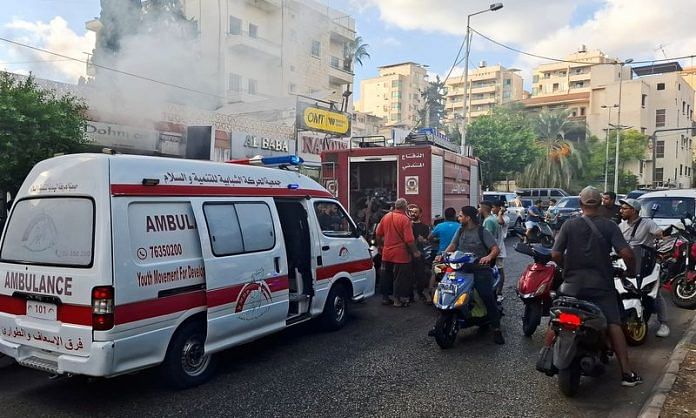By Emilie Madi and Timour Azhari
BEIRUT (Reuters) – When streams of bloodied people converged on Lebanon’s hospitals on Tuesday, it was a test of whether the crisis-hit health sector could cope with a mass casualty event like what could be expected in a wider war with Israel.
Frontline workers described hellish scenes: victims of thousands of small explosions linked to pagers used by militant group Hezbollah rushed in, some with organs protruding, others with faces missing eyes or hands missing fingers.
Lebanon has lurched from one crisis to another in recent years, including a 2019 financial collapse and the 2020 Beirut port blast, but Health Minister Firas Abiad said the sector had responded well, thanks in part to months of preparation.
“The response was good and most importantly, we were able to get care to those who needed it, especially for those with serious injuries,” he said in a news conference on Wednesday, noting the low number of deaths compared to injuries.
Over 2,700 people arrived at 20 Lebanese hospitals after the blasts, Abiad said, some 300 in critical condition. The death toll stands at 12, he added.
More than 400 surgeries were carried out on Tuesday, the majority for facial and eye injuries.
“Yesterday was a very big test. Could we be going towards bigger tests? I don’t know,” he said.
Some healthcare workers described a strong sense of foreboding over what may yet come as tensions between Israel and Hezbollah reach fever pitch, raising fears of a wider war.
Government money for hospitals has dried up and thousands of doctors and nurses have left the country, placing a greater strain on those who remain.
Elias Jrade, a veteran eye surgeon and Lebanese lawmaker, said he operated for more than 12 hours straight after Tuesday’s blasts, dealing with the most serious cases that required reconstruction surgery.
“I didn’t understand why we were trained to keep down our emotions until I started doing this, till I saw many of the things we faced yesterday and those that we might face in the future,” he said, breaking down in tears at his Beirut practise.
Speaking to Reuters during a short break before heading back to work, he compared the scale of the injuries to the Aug. 4, 2020 chemical blast at Beirut port that killed more than 200 people and left some 6,000 wounded.
“You are reconstructing each patient to reconstruct part of Lebanon, to bring Lebanon back to life,” Jrade said.
Dania El Hallak, a healthcare professional at a Beirut hospital, said she was struggling to cope with what she had seen so far.
“I had to remove bandages only to find no eyeballs in place,” she said.
“I saw people slaughtered for the first time. Is it possible to ever recover from such a sight?”
(Reporting by Emilie Madi and Timour Azhari; Editing by Christina Fincher)
Disclaimer: This report is auto generated from the Reuters news service. ThePrint holds no responsibilty for its content.



